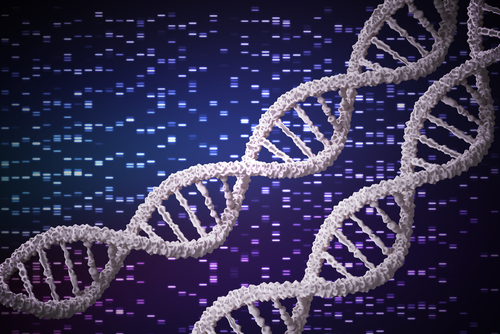Epigenetic Therapy Restored Memory, Cognitive Function in Mouse Model of Familial AD

Using a new type of approach called epigenetics, researchers were able to temporarily rescue memory and cognitive function in a mouse model of Alzheimer’s disease.
The study showed that epigenetic changes — external modifications to DNA to turn genes on or off without changing the actual DNA sequence — are a key contributor to Alzheimer’s disease. Targeting these changes may become a new strategy for reversing Alzheimer’s symptoms.
“In this paper, we have not only identified the epigenetic factors that contribute to the memory loss, we also found ways to temporarily reverse them in an animal model of [Alzheimer’s disease],” Zhen Yan, professor in the Department of Physiology and Biophysics at the Jacobs School of Medicine and Biomedical Sciences at the University at Buffalo, State University of New York, and the study’s lead author, said in a press release.
The study, “Inhibition of EHMT1/2 rescues synaptic and cognitive functions for Alzheimer’s disease,” was published in the journal Brain.
Both environmental and genetic risk factors are known to underlie the development of Alzheimer’s disease. However, apart from the identification of a few Alzheimer’s-associated genetic risk factors, “a genetic basis for the majority of this disease has not emerged,” researchers said.
Recently, epigenetic modifications have been associated with aging and neurodegeneration. Epigenetics refers to changes in organisms brought about by modification of gene expression, rather than by alteration of the genetic code in the form of DNA. For example, a person might be born with a propensity to be tall; however, if undernourished as a child, that person will likely not grow as much as their genes would allow.
The importance of epigenetic changes in Alzheimer’s disease is not well-understood. Researchers at the University at Buffalo set out to investigate the role of epigenetic marks — called methyl groups — that sit on top of the genes and work as “switch off” signals. In particular, they analyzed methyl groups located in a group of proteins called histones.
Histones are proteins that work like a spool, with DNA wrapping around them. Adding more methyl groups to histones induces conformational changes to the DNA, making it more condensed and switching off gene expression. Gene expression is the process by which information in a gene is synthesized to create a working product, such as a protein.
The team used a mouse model carrying five mutations linked to familial Alzheimer’s disease (FAD). These animals develop a disease that closely resembles that in humans, including learning and memory deficits.
They specifically focused on the prefrontal cortex (PFC) of the brain, “a command center for high-level ‘executive’ functions, such as working memory, planning and attention,” researchers stated.
Researchers also analyzed post-mortem brain tissue from patients with familial Alzheimer’s and control subjects.
Looking at mice PFC tissue samples, they observed that these animals carried more of the “off” switch methyl groups in specific histone proteins. Moreover, levels of this repressive mark increased significantly in aged mice with familial Alzheimer’s.
Epigenetic alterations in Alzheimer’s patients frequently occur in the later stages of the disease, when patients are unable to retain recently learned information and exhibit the most dramatic cognitive decline, Yan said.
This is due to the loss of glutamate receptors, which mediate the majority of excitatory neurotransmitters, and whose function is key for learning and short-term memory.
Excitatory signaling from one nerve cell to the next makes the latter cell more likely to fire an electrical signal. Inhibitory signaling makes the latter cell less likely to fire. This is the basis of communication between nerve cells in the brain.
Researchers saw that the loss of glutamate receptors in the brains of mice with Alzheimer’s was due to histone repression as a consequence of the addition of methyl groups. The same observation was true when they compared post-mortem brain tissue samples from people with Alzheimer’s disease and control subjects.
“We found that in AD, many sub-units of glutamate receptors in the frontal cortex are downregulated, disrupting the excitatory signals, which impairs working memory,” Yan said. “This AD-linked abnormal histone modification is what represses gene expression, diminishing glutamate receptors, which leads to loss of synaptic function and memory deficits.”
These findings support the use of new treatment strategies in Alzheimer’s. Because repressive histone modification is controlled by enzymes — specific proteins targetable by small molecules — their function can be modulated.
Researchers found that the activity of two specific enzymes that carry the methyl groups to histones was higher in both mice with familial Alzheimer’s and in brain tissues of Alzheimer’s patients.
Treating mice with an inhibitor of these enzymes led to several positive outcomes: not only did it reverse histone hyper-methylation, but it also recovered the levels of glutamate receptors in the brain, and with it their function in the prefrontal cortex and hippocampus (a region in the brain known to be linked to memory and spatial navigation).
“Our study not only reveals the correlation between epigenetic changes and AD, we also found we can correct the cognitive dysfunction by targeting the epigenetic enzymes to restore glutamate receptors,” Yan said.
“When we gave the AD animals this enzyme inhibitor, we saw the rescue of cognitive function confirmed through evaluations of recognition memory, spatial memory, and working memory. We were quite surprised to see such dramatic cognitive improvement,” she said. “At the same time, we saw the recovery of glutamate receptor expression and function in the frontal cortex.”
However, these improvements lasted for only one week. The next step is to develop therapies with a higher brain penetration, enabling a more successful outcome.
“An epigenetic approach can correct a network of genes, which will collectively restore cells to their normal state and restore the complex brain function,” Yan said. “If many of the disregulated genes in AD are normalized by targeting specific epigenetic enzymes, it will be possible to restore cognitive function and behavior.”






